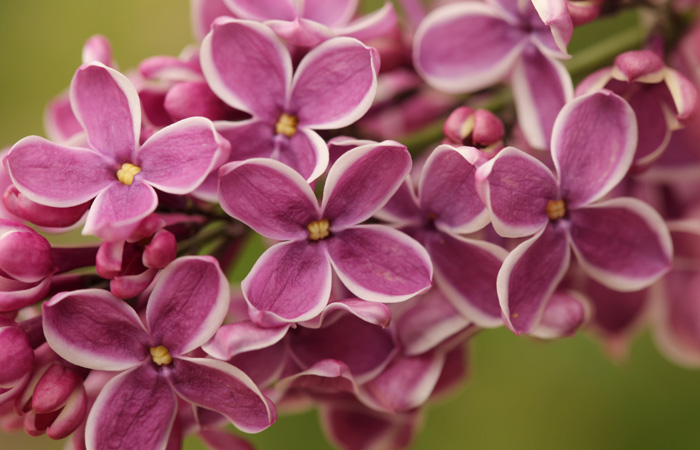Deeply Rooted
Sensational!

I was surprised when I first heard Sheldon recommend lilacs as a wind blocking hedge, lilacs?! The flowers seem so pretty and dainty, how could they be a good shield from the aggressive Manitoba winds? I had a lot to learn.
When our Mennonite forefathers settled in this area some of the first thing they planted around their farm yards for shelter was Lilacs they had brought along from Europe (as it turns out there are no lilacs native to North America.) Either the Villosa lilac or the Common French lilac was the favourites for privacy and protection from prairie winds. Zone 2 cold hardy, drought tolerant and very soil tolerant they became a classic in our red river valley. Today lilacs are still out top recommendation for a hedge in your yard, or shelter belt around the farm. However we have far more options to pick from today that are far more… sensational.
My favourite lilac for many years, the Sensation lilac, is unique. It is the only lilac I have ever come across to have a bi-coloured flower. Vibrant purple blossoms with white trim set this lilac apart from the rest. True to its French lilac heritage, Sensation has Zone 2 cold tolerance and excellent soil tolerance. Growing 8′-10′ tall in maturity, it is a large shrub, but the size can be easily managed with a yearly pruning. This is the one thing that lilacs are particular about. Lilacs will flower for one and a half to two weeks. Once it is finished flowering and the blossoms have turned brown do you have a two week window to do your pruning for the year. After those two weeks have passed the lilac will form its buds for the next year. Therefore, pruning any time outside of this two week window will remove your flowers from the shrub before they even get a chance to reveal themselves. This is a common mistake made by many gardeners who think that a spring pruning is the best approach. In most cases this would be correct, but not for the lilacs. Unless of course you have allergies, then this could be very strategic!
Many people can be reluctant when considering a French lilac for the yard because they have a reputation for spreading via suckers from the roots. While it is true that an old French lilac can become invasive, a young healthy French lilac will have only what we call local suckering. New shoots begin sprouting from the ground within a 1 foot radius of the original plant. This can give the lilac a multi-stem form, making a wider shrub. However it is not nearly as invasive as some of the old fashion Poplars for example.
Well it’s time to go water my Sensation lilac again, keep on hydrating your plants and yourselves! Enjoy the heat!




